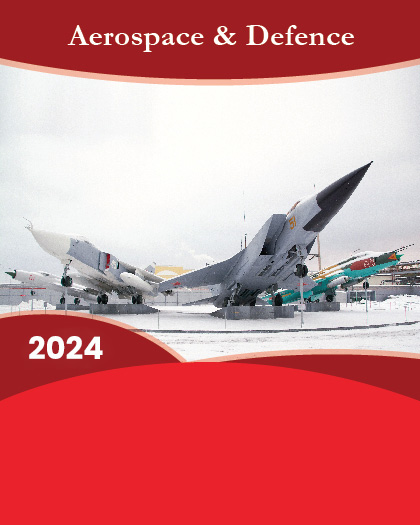Table of Contents
Chapter 1. Global Unmanned Aerial Vehicles (UAVs) Simulation Market Executive Summary
1.1. Global Unmanned Aerial Vehicles (UAVs) Simulation Market Size & Forecast (2022- 2032)
1.2. Regional Summary
1.3. Segmental Summary
1.3.1. By Component
1.3.2. By Drone Type
1.3.3. By End Use
1.4. Key Trends
1.5. Recession Impact
1.6. Analyst Recommendation & Conclusion
Chapter 2. Global Unmanned Aerial Vehicles (UAVs) Simulation Market Definition and Research Assumptions
2.1. Research Objective
2.2. Market Definition
2.3. Research Assumptions
2.3.1. Inclusion & Exclusion
2.3.2. Limitations
2.3.3. Supply Side Analysis
2.3.3.1. Availability
2.3.3.2. Infrastructure
2.3.3.3. Regulatory Environment
2.3.3.4. Market Competition
2.3.3.5. Economic Viability (Consumer's Perspective)
2.3.4. Demand Side Analysis
2.3.4.1. Regulatory frameworks
2.3.4.2. Technological Advancements
2.3.4.3. Environmental Considerations
2.3.4.4. Consumer Awareness & Acceptance
2.4. Estimation Methodology
2.5. Years Considered for the Study
2.6. Currency Conversion Rates
Chapter 3. Global Unmanned Aerial Vehicles (UAVs) Simulation Market Dynamics
3.1. Market Drivers
3.1.1. Rising adoption of UAVs in military and commercial applications
3.1.2. Less number of skilled and trained pilots
3.2. Market Challenges
3.2.1. High cost of UAV simulation systems
3.2.2. Lack of R&D investment in UAV simulation technology
3.3. Market Opportunities
3.3.1. Contracts and agreements with military forces
3.3.2. Rise in defense expenditure globally
Chapter 4. Global Unmanned Aerial Vehicles (UAVs) Simulation Market Industry Analysis
4.1. Porter's 5 Force Model
4.1.1. Bargaining Power of Suppliers
4.1.2. Bargaining Power of Buyers
4.1.3. Threat of New Entrants
4.1.4. Threat of Substitutes
4.1.5. Competitive Rivalry
4.1.6. Futuristic Approach to Porter's 5 Force Model
4.1.7. Porter's 5 Force Impact Analysis
4.2. PESTEL Analysis
4.2.1. Political
4.2.2. Economical
4.2.3. Social
4.2.4. Technological
4.2.5. Environmental
4.2.6. Legal
4.3. Top investment opportunity
4.4. Top winning strategies
4.5. Disruptive Trends
4.6. Industry Expert Perspective
4.7. Analyst Recommendation & Conclusion
Chapter 5. Global Unmanned Aerial Vehicles (UAVs) Simulation Market Size & Forecasts by Component 2022-2032
5.1. Segment Dashboard
5.2. Global Unmanned Aerial Vehicles (UAVs) Simulation Market: Component Revenue Trend Analysis, 2022 & 2032 (USD Million)
5.2.1. Hardware
5.2.2. Software
Chapter 6. Global Unmanned Aerial Vehicles (UAVs) Simulation Market Size & Forecasts by Drone Type 2022-2032
6.1. Segment Dashboard
6.2. Global Unmanned Aerial Vehicles (UAVs) Simulation Market: Drone Type Revenue Trend Analysis, 2022 & 2032 (USD Million)
6.2.1. Rotary Wing
6.2.2. Fixed Wing
Chapter 7. Global Unmanned Aerial Vehicles (UAVs) Simulation Market Size & Forecasts by End Use 2022-2032
7.1. Segment Dashboard
7.2. Global Unmanned Aerial Vehicles (UAVs) Simulation Market: End Use Revenue Trend Analysis, 2022 & 2032 (USD Million)
7.2.1. Military
7.2.2. Civil and Commercial
Chapter 8. Global Unmanned Aerial Vehicles (UAVs) Simulation Market Size & Forecasts by Region 2022-2032
8.1. North America Unmanned Aerial Vehicles (UAVs) Simulation Market
8.1.1. U.S. Unmanned Aerial Vehicles (UAVs) Simulation Market
8.1.1.1. Component breakdown size & forecasts, 2022-2032
8.1.1.2. Drone Type breakdown size & forecasts, 2022-2032
8.1.1.3. End Use breakdown size & forecasts, 2022-2032
8.1.2. Canada Unmanned Aerial Vehicles (UAVs) Simulation Market
8.2. Europe Unmanned Aerial Vehicles (UAVs) Simulation Market
8.2.1. U.K. Unmanned Aerial Vehicles (UAVs) Simulation Market
8.2.2. Germany Unmanned Aerial Vehicles (UAVs) Simulation Market
8.2.3. France Unmanned Aerial Vehicles (UAVs) Simulation Market
8.2.4. Spain Unmanned Aerial Vehicles (UAVs) Simulation Market
8.2.5. Italy Unmanned Aerial Vehicles (UAVs) Simulation Market
8.2.6. Rest of Europe Unmanned Aerial Vehicles (UAVs) Simulation Market
8.3. Asia-Pacific Unmanned Aerial Vehicles (UAVs) Simulation Market
8.3.1. China Unmanned Aerial Vehicles (UAVs) Simulation Market
8.3.2. India Unmanned Aerial Vehicles (UAVs) Simulation Market
8.3.3. Japan Unmanned Aerial Vehicles (UAVs) Simulation Market
8.3.4. Australia Unmanned Aerial Vehicles (UAVs) Simulation Market
8.3.5. South Korea Unmanned Aerial Vehicles (UAVs) Simulation Market
8.3.6. Rest of Asia Pacific Unmanned Aerial Vehicles (UAVs) Simulation Market
8.4. Latin America Unmanned Aerial Vehicles (UAVs) Simulation Market
8.4.1. Brazil Unmanned Aerial Vehicles (UAVs) Simulation Market
8.4.2. Mexico Unmanned Aerial Vehicles (UAVs) Simulation Market
8.4.3. Rest of Latin America Unmanned Aerial Vehicles (UAVs) Simulation Market
8.5. Middle East & Africa Unmanned Aerial Vehicles (UAVs) Simulation Market
8.5.1. Saudi Arabia Unmanned Aerial Vehicles (UAVs) Simulation Market
8.5.2. South Africa Unmanned Aerial Vehicles (UAVs) Simulation Market
8.5.3. Rest of Middle East & Africa Unmanned Aerial Vehicles (UAVs) Simulation Market
Chapter 9. Competitive Intelligence
9.1. Key Company SWOT Analysis
9.2. Top Market Strategies
9.3. Company Profiles
9.3.1. Raytheon Technologies
9.3.1.1. Key Information
9.3.1.2. Overview
9.3.1.3. Financial (Subject to Data Availability)
9.3.1.4. Product Summary
9.3.1.5. Market Strategies
9.3.2. Quantum3D
9.3.3. Indra Sistema
9.3.4. BLUEHALO
9.3.5. General Atomics Aeronautical Systems, Inc.
9.3.6. Leonardo S.p.A.
9.3.7. Israel Aerospace Industries Ltd.
9.3.8. HAVELSAN A.S.
9.3.9. SINGAPORE TECHNOLOGIES ELECTRONICS LIMITED
9.3.10. L3Harris Technologies, Inc.
9.3.11. SIMLAT UAS SIMULATION
9.3.12. CAE Inc.
9.3.13. Textron Inc.
9.3.14. Northrop Grumman Corporation (U.S.)
9.3.15. Zen Technologies Ltd. (India)
Chapter 10. Research Process
10.1. Research Process
10.1.1. Data Mining
10.1.2. Analysis
10.1.3. Market Estimation
10.1.4. Validation
10.1.5. Publishing
10.2. Research Attributes























